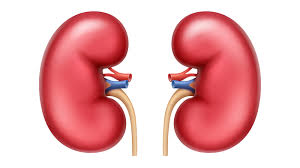What is a high blood creatinine level?

- Blood creatinine > 120 mcmol/L is above normal and a concern – and may indicate chronic kidney disease (CKD)
- Blood creatinine > 150 mcmol/L is raised and usually problem – i.e. CKD (or AKI)
- Blood creatinine > 200 mcmol/L is high and always a problem – it indicates Stage 4 CKD or worse
- Blood creatinine >300 mcmol is a major concern – and requires prompt action
- Blood creatinine >500 mcmol/L is life-threatening kidney failure – and dialysis is (usually) required.
What is creatinine – and what is it used for?
It is a blood test/number that reflects kidney function; the lower the creatinine GFR, the better the kidney function, the better.
The creatinine is used to:
- Diagnose CKD (and AKI)
- Monitor – changes in kidney function over time
- Decide – whether you need dialysis or a kidney transplant.
What is a normal creatinine level?
A normal creatinine level is 60-120 mcmol/L (in adults).
How does creatinine relate to GFR?
The GFR is derived from the creatinine (by the computer putting it into a mathematical equation) – but, unlike creatinine, for GFR the higher the number, the better is the kidney function.
 CKD/GFR classification
CKD/GFR classification
Blood creatinine levels at stages of GFR/CKD
- Stage 1 CKD. Creatinine = 60-120 mcmol/L, i.e. kidney damage with normal kidney function.
- Stage 2. Creatinine = 60-120
- Stage 3A. Creatinine = 120-150
- Stage 3B. Creatinine 150-200
- Stage 4. Creatinine >200
- Stage 5. Creatinine > 400.
Note 1. The values are approximate, e.g. someone may have a creatinine of 151 and be in Stage 3A
Note 2. But, the big but. These number ranges (and what we have said is a ‘normal’ creatinine/GFR’) are so neat, they are clearly made up (wrong) – as are all the CKD stages. But it is the simple table that doctors and nurses use to guide investigation and treatment.
Summary
We have described what is a high blood creatinine level – i.e. a blood creatinine > 200 mcmol/L. This is high and always a problem. We hope this has been helpful.
Other resources
Here is more information on the problems with creatinine/GFR on our sister CKD Explained website.

